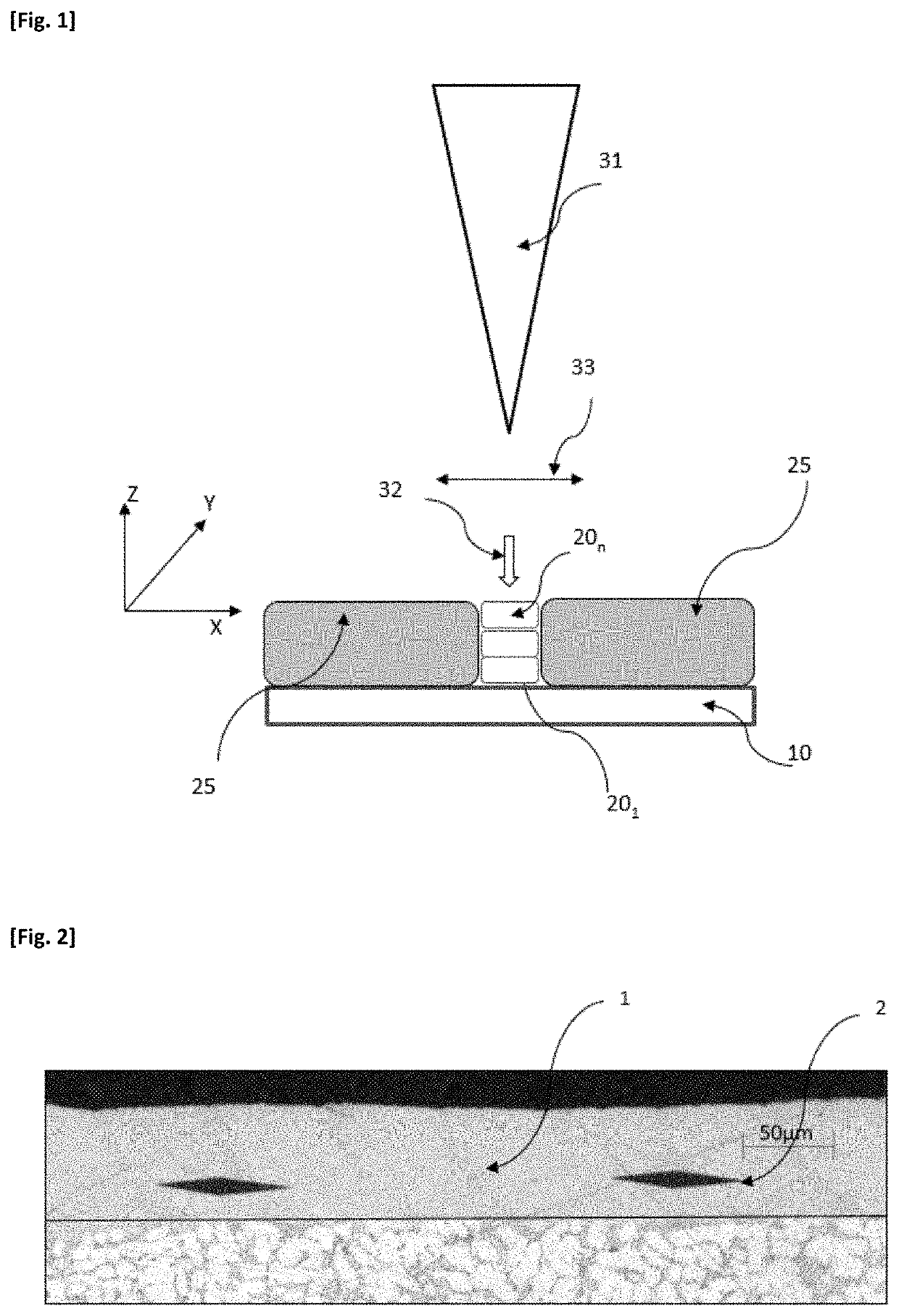Process for manufacturing an aluminium alloy part
a manufacturing method and alloy technology, applied in the direction of process efficiency improvement, additive manufacturing, manufacturing tools, etc., can solve the problems of limited mechanical properties, poor mechanical properties, and high powder cost, so as to improve corrosion resistance, reduce roughness, and increase the hardness of the product obtained
- Summary
- Abstract
- Description
- Claims
- Application Information
AI Technical Summary
Benefits of technology
Problems solved by technology
Method used
Image
Examples
example 1
SLM on Discs
[0103]The alloys as described in table 1 above were tested by a fast prototyping method.
[0104]Samples were machined for sweeping the surface with a laser, in the form of discs with a thickness of 5 mm and a diameter of 27 mm, from the ingots obtained above. The discs were placed in an SLM machine and sweeps of the surface were carried out with a laser, following the same sweep strategy and method conditions representative of those used for the SLM method. It was in fact found that it was possible in this way to evaluate the suitability of the alloys for the SLM method and in particular the surface quality, sensitivity to hot cracking, hardness in the untreated state and hardness after heat treatment.
[0105]Under the laser beam, the metal melts in a bath 10 to 350 μm thick. After the passage of the laser, the metal cools quickly as in the SLM method. After the laser sweep, a fine surface layer 10 to 350 μm thick was melted and then solidified. The properties of the metal i...
example 2
SLM on Powder
[0116]Ingots cast from the compositions described in table 1 above were atomised by the UTBM (Université de Technologie de Belfort Montbéliard) in order to obtain a powder by gas jet atomisation (the method described above). Granulometric analysis of the powders obtained was carried out by laser diffraction using a Malvern Mastersizer 2000 granulometer in accordance with ISO 13320. The curve describing the change in the volume fraction as a function of the diameter of the particles forming the powder generally describes a distribution that can be assimilated to a Gaussian distribution. The 10%, 50% (median) and 90% fractiles of the distribution obtained are generally referred to as D10, D50 and D90 respectively.
[0117]The D10, D50 and D90 characteristics of the powders obtained are given in table 4 below.
TABLE 4AlloyD10 (μm)D50 (μm)D90 (μm)Reference (8009)33.552.381.2Innov142.358.181.2Innov239.560.793.6Innov358.688.3132
[0118]Thus it is possible to manufacture powders fro...
PUM
| Property | Measurement | Unit |
|---|---|---|
| temperature | aaaaa | aaaaa |
| temperature | aaaaa | aaaaa |
| temperature | aaaaa | aaaaa |
Abstract
Description
Claims
Application Information
 Login to View More
Login to View More - R&D
- Intellectual Property
- Life Sciences
- Materials
- Tech Scout
- Unparalleled Data Quality
- Higher Quality Content
- 60% Fewer Hallucinations
Browse by: Latest US Patents, China's latest patents, Technical Efficacy Thesaurus, Application Domain, Technology Topic, Popular Technical Reports.
© 2025 PatSnap. All rights reserved.Legal|Privacy policy|Modern Slavery Act Transparency Statement|Sitemap|About US| Contact US: help@patsnap.com

